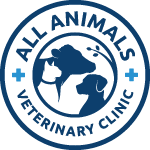What are the most common cattle emergencies?
Some of the common emergencies that we can have are bloating and dystocia, which is where a mother is not able to properly birth her calf.
How do I know if my cow is sick?
If your cow is sick, usually the first sign is that they will segregate themselves from the herd. Usually if you're not able to find a cow with the herd, she's probably off somewhere acting sick, having dumpy ears, and laying low to the ground.
What are the immediate steps to take in case of a cattle birthing complication?
Immediate steps are to do an evaluation to see if she is progressing with the labor. If it seems like the feet are not progressing outwards or the head is not coming out like it should, we recommend calling the veterinarian.
What do I do if a newborn calf is not breathing properly?
If the newborn calf is not breathing properly, we recommend taking some towels and trying to remove as much mucus from the nose and from the mouth as possible. In some cases, you may need to perform CPR.
What are the signs of bloat in cows?
The most common sign of bloat in cattle is that they will actually bloat or kind of look large on their sides.
Is mastitis in dairy cows an emergency?
It can be an emergency. Mastitis can actually kill cattle because if the bacteria gets into their bloodstream, it can cause them to go septic.
What are the signs of mastitis in a cow?
The most common signs of mastitis in cattle are a hard and hot udder with a very chunky, milky discharge from the teats.
What is the best course of action for treating foot rot in cattle?
For treating foot rot, the best course is to be preventative. Make sure that your cattle have a nice, dry place to walk on and lay on, especially in the wet seasons, because foot rot will thrive in an area where it's really wet. If you think that you're going to start dealing with foot rot, then we recommend bathing their feet in epsom salt or some iodine to prevent the spread of disease.
How do you manage heat stress for cattle during extreme temperatures?
The best way to prevent heat stress is to make sure that they have a nice, shady area. Make sure that their food and clean water is in that shady area. If the cattle don't want to move from the shade to get water, they won't.
What are the key indicators of dehydration in cows and rapid rehydration techniques?
One of the main indicators of dehydration in cattle is that they'll have droopy ears, they'll be lethargic, and when you look at their eyelashes, normally on a hydrated cow, their eyelashes are going to be perpendicular to the ground. If their eyelashes start to slant downwards, that means that their eyes are sunken, that means they're dehydrated. The best ways to rehydrate a cow is to provide them with fresh water, or you may need to use an oral esophageal tube to put water into their stomach.
Should I isolate cattle who have symptoms of illness?
Always. If you can isolate any sick cow, that is the best thing that you can do, because if you don't know what is causing that sickness, we don't want it to spread to the other cattle.
If you still have other questions and you'd like to reach out to us, you can call us directly at (765) 482-7387, or you can email us at [email protected]. But please do reach out, and we'll get back to you as fast as we can. Don't forget to follow us on social media Facebook, Instagram
